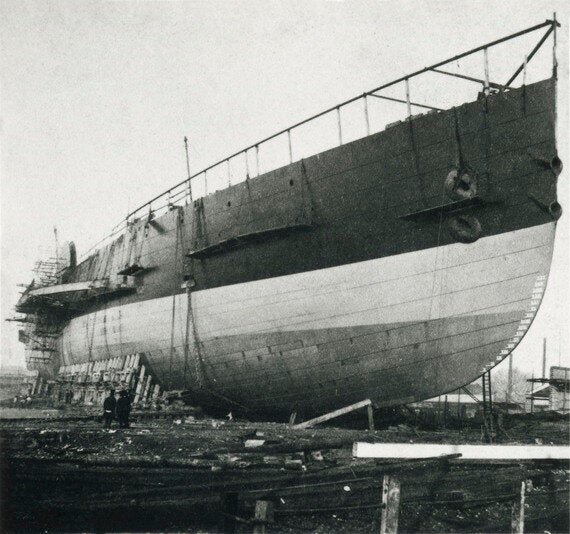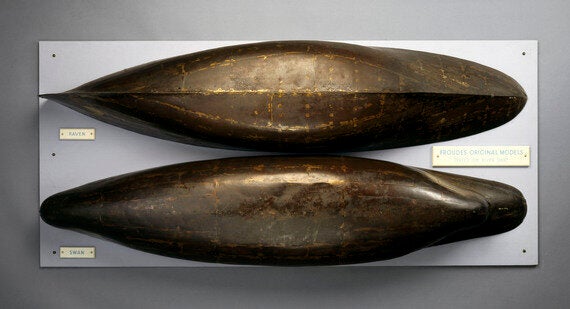If it wasn't for ships, we'd be sunk. Once, this was widely known. Docks were close to the centres of port cities and were teeming with maritime life. Our coastlines were motorways for goods and materials haulage. Rivers thronged with boats carrying people and cargo.

Ships and barges at the Port of London, about 1910, c.Science Museum
But then ships got bigger, as so did the ports which moved downstream. River traffic dried up as bridges, tunnels and motor vehicles took the load. Asphalt and concrete motorways replaced liquid ones.
Yet we still rely on ships. In 2014 almost 10 billion tons of cargo was carried by ships each year: 80 per cent of all world trade by volume and over 70 per cent by value. There were some 50,000 cargo ships afloat, transporting vast quantities of crude oil, petroleum, gas, coal, iron and aluminium ore, metals, minerals, grain and phosphate rock used for fertiliser, animal feeds and the chemical industry, as well as other bulk materials.
In addition, a fleet of specialist ships carried between them some 160 million containers, the largest ship transporting the equivalent of over 19,000 standard-sized containers on each journey.
The entire operation relies on efficient ships, and any shipping company that can reduce the resistance of its ships in water by even a couple of per cent will see fuel costs go down dramatically. This is why the work of hydrodynamicists - specialists who study phenomena such as the flow of water around ship hulls - has never been more valuable.
From the 1740s to the 1840s, a number of mathematicians published important work in this area. Equations devised by the physicist Claude-Louis Navier and the mathematician George Stokes came to define the mathematics of fluid flow.
But there was a problem. Whilst the Navier-Stokes equations gave theoretical form to problems in hydrodynamics, they were often difficult to solve in real life. Enter William Froude, a mathematician-turned-engineering scientist who began to combine the new mathematics with practical experiments.

John Scott Russell's Great Eastern under construction, about 1858, showing the sharp bow, c.Science Museum
Froude's approach was to use scale models. In 1867 he carried out a series of tests of two different ship designs on the River Dart in Devon. One, named Raven, was based on the theories of shipbuilder John Scott Russell who had incorporated a sharp bow in his famous 1858 vessel, the Great Eastern, by far the largest ship ever built at that time. The other, called Swan, had a bulbous bow derived from Froude's observations of water birds.

Six-foot models of Raven and Swan, 1867, c.Science Museum
The River Dart experiments showed that bulbous bows had less resistance than sharp ones above a certain speed, disproving Scott Russell's theories and prompting a major programme of government research. By 1936 it was estimated that ship hull resistance had been reduced by ten per cent in Britain's merchant fleet owing to test-tank experiments, saving millions of pounds in fuel costs.
By the 1950s, cargo shipping was growing fast as the world economy expanded rapidly. But it was also changing. Containerisation and the rise of the oil economy led to new types of specialised ships which required ever more efficient shapes to ensure profitability.
The manufacture of modern cargo ships is now based on continuous model testing to ensure the hydrodynamics have not been compromised during design. Computer modelling plays a major role too and throughout this activity, William Froude's mathematical work remains central.
But there remains a crucial challenge in the theoretical underpinning of ship design. The nineteenth-century equations of Claude-Louis Navier and George Stokes have great theoretical power in mathematics but are still not fully understood. The first person to provide a better understanding of the mathematics locked up in these equations - one of the seven greatest problems in modern mathematics - will receive a million-dollar prize offered by the Clay Mathematics Institute.
Two of William Froude's pioneering models will be on display in the Science Museum's Mathematics: The Winton Gallery, opening on 8 December.